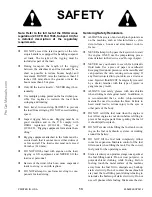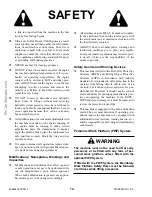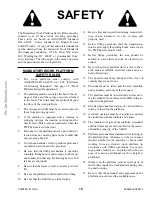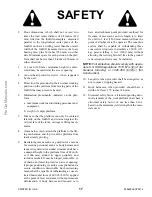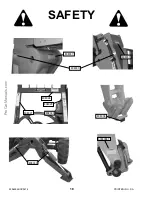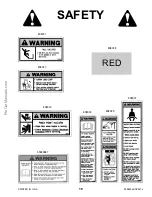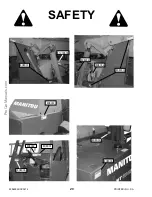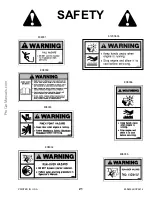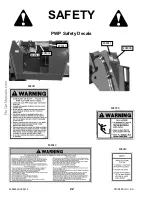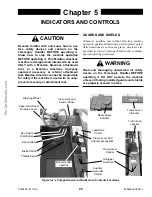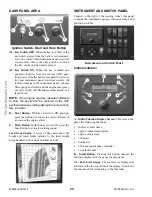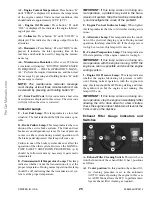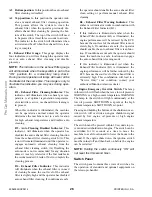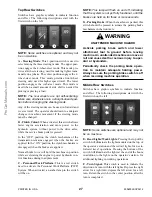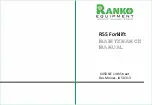
PRINTED IN U.S.A.
15
50960025/CP0514
The Mandatory Work Platform Safety Rules must be
adhered to at all times while elevating personnel.
These rules are based on ANSI/ITSDF Standard
B56.6-2005, “Safety Standard for Rough Terrain
Forklift Trucks.” (A copy of this and related standards
can be obtained from the Industrial Truck Standards
Development Foundation, 1750 K Street NW, Suite
460, Washington, DC 20009; or downloaded from:
www.itsdf.org.) The rules apply to the owner, operator
and the personnel in the work platform.
MANDATORY WORK PLATFORM
SAFETY RULES
1.
The work platform must comply with
ANSI/ITSDF B56.6-2005, Sec. 8.24, “Platforms
for Elevating Personnel.” (See page 16, “Work
Platform Design Requirements.”)
2.
The platform must be securely attached to the car-
riage or forks, and the carriage securely attached
to the boom. The forks must not protrude beyond
the floor of the work platform.
3.
The carriage and forks must be secured to prevent
them from pivoting upward.
4.
If the machine is equipped with a rotating or
swinging carriage, the rotation or swing must be
deactivated. (This occurs automatically when the
PWP System is switched on.)
5.
Personnel on the platform must be provided pro-
tection from any moving parts on the forklift that
may present a hazard.
6.
If overhead hazards exist for platform personnel,
overhead protection must be provided.
7.
Be sure that the lifting mechanism is operating
smoothly throughout its entire range, both empty
and loaded, and that any lift-limiting devices and
latches are functional.
8.
Be sure that the frame is level, to ensure a vertical
lift.
9.
Be sure the platform is horizontal before lifting.
10. Be sure that the forklift has a firm footing.
SAFETY
11. Be sure that any required restraining means (rail-
ings, chains, harnesses, etc.) are in place and
properly used.
12. Before lifting personnel, shift the transmission
into Neutral, apply the parking brake, and activate
the PWP System mode switch.
13. Before lifting personnel, the area should be
marked to warn others of work by elevated per-
sonnel.
14. Be sure the path of platform travel is clear of haz-
ards, such as scaffolds, electrical wires and over-
head obstructions.
15. The operator must keep hands and feet clear of
controls that are not in use.
16. Personnel must be lifted and lowered smoothly
and cautiously, and only at their request.
17. The platform must be lowered fully before mov-
ing the forklift. Do not drive the forklift with per-
sonnel on the platform.
18. Elevated personnel must always be alerted before
raising or lowering the platform.
19. A trained operator must be in position to operate
the forklift and boom controls at all times.
20. The combined weight of the platform, personnel
and load must not exceed one-third of the materi-
al-handling capacity of the forklift.
21. Platform personnel must maintain firm footing on
the platform floor. A harness is to be worn and a
lanyard attached to the platform or boom when
working from an elevated work platform, in
accordance with OSHA regulations. Use of rail-
ings, planks, ladders, etc. on platform for the pur-
pose of achieving additional reach or height is
prohibited.
22. Workers on the platform must keep all parts of
their bodies inside the work platform during rais-
ing and lowering.
23. Be sure that the personnel and equipment on the
platform do not exceed the available space.













